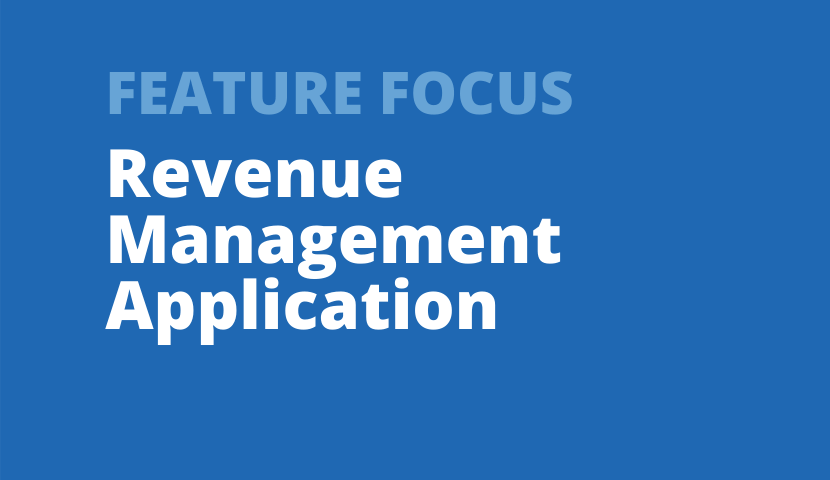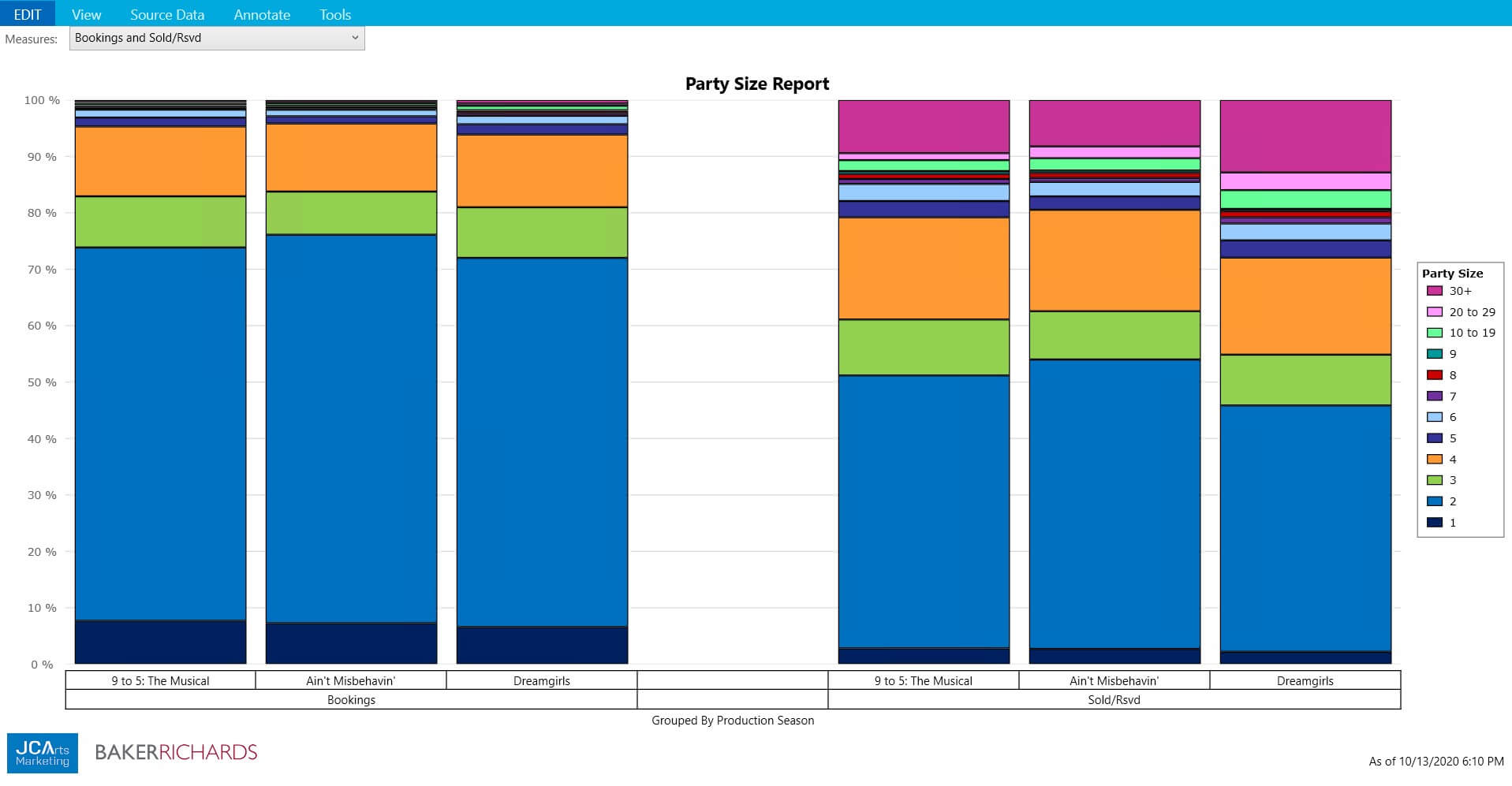RMA Feature Focus: The Party Size Report

Jennifer Nemeth
Manager, Professional Services
With the promise of a COVID-19 vaccine on the horizon, arts organizations across the country are cautiously planning to once again welcome patrons into their venues in 2021. There are a myriad of factors that go into this planning, from local safety regulations, to individual patron preferences, as well as the likely continuation of digital streaming, and the need to accommodate social distancing protocols. As you work through all of these variables, we wanted to remind you of an oft-forgotten RMA report, which will be particularly helpful for planning for social distancing: the Party Size Report.
PARTY SIZE REPORT
One of the big questions when laying out your venue for social distancing is: how many tickets is each household going to buy? You want to plan out your venue to maximize the number of people you can seat safely. Presumably, tickets purchased by the same booker will be able to sit together, so how do you decide how many groups of each party size to set aside? How many singles, how many pairs, how many groups of four?
The Party Size Report is designed to answer exactly these questions. The report breaks down sales according to the party size in which customers booked. This allows you to see exactly what proportion of your audience attends as a single, pair, etc. An example of this report is below.
Remember that in any booker report, a booker refers to one constituent in your database, and a booking refers to a unique combination of booker and performance. Even if a constituent places more than one order for a single performance, it will be considered only one booking.

In the report above, we can see that only about 7% of bookings for these three productions are individual tickets (party size of 1), making up less than 3% of tickets sold. This means that when we plan our socially distanced house, individual seats should be only a small portion of seats. On the other hand, around 65-70% of bookings, and about 50% of tickets sold, are in pairs. Thus, about half of our venue should be organized into pairs. Of course, you’ll still have to make some assumptions to adjust this historical information for the current moment. For example, some of the largest party sizes will not be attending performances again for quite some time. Nevertheless, this data provides a critical starting point for your planning.
The Party Size Report has the option to include up to three measures on the horizontal axis: Bookings, Sold/Rsvd, and Sold/Rsvd Income. During your social-distancing planning, the number of bookings and the number of sold/reserved tickets will be most useful for determining the proportion of each party size to plan for. However, if you’re making difficult decisions about which group sizes to exclude or reduce, the income measures may prove helpful.
You can group the Party Size Report by year, season, or production. These different groupings will allow you to gain an understanding of what averages are across seasons, and how productions compare to one another. You may find that party sizes vary wildly for different genres or series, and will want to prepare accordingly. In the example below, we can see that average party sizes have historically been smaller for the “Festival Season” than for the “Mainstage Season.” You may find that party sizes differ for classical versus pops concerts, or for musicals versus straight plays. If so, it will be beneficial to have more than one socially-distanced map prepared, to account for differences by performance or series.

WE’RE HERE TO HELP.
The Party Size Report is just one of many reports in the RMA designed to help your organization maximize revenue generated from ticket sales. Check out the Booker Behavior Reports folder in your RMA for some other less-used reports that will be particularly interesting as we emerge from the pandemic. As always, if you have questions or need any help with your RMA, please contact your JCA consultant or email us at smarter@jcainc.com.

